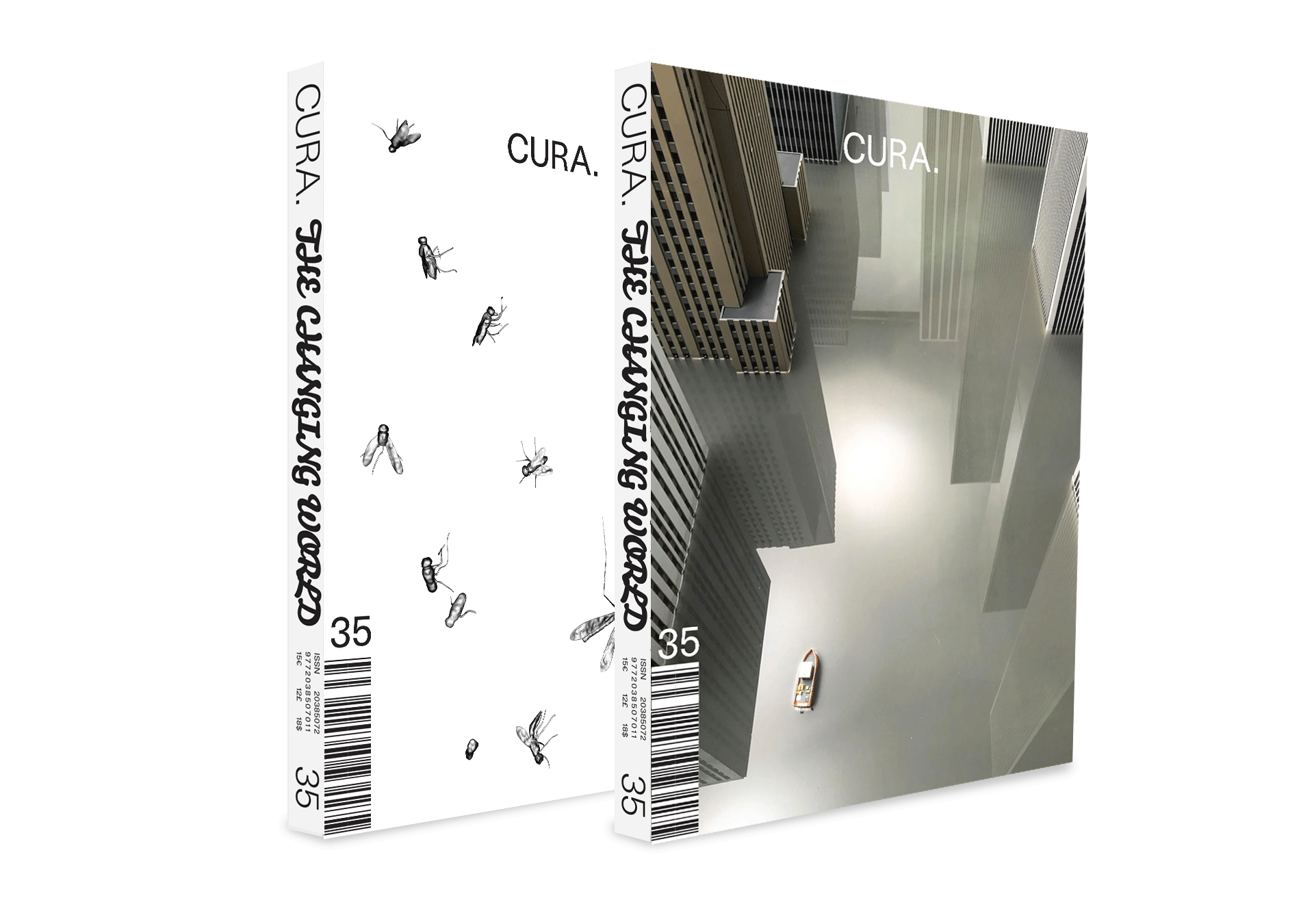November 6, 2020
How were we imagining the future? And now that the future has suddenly arrived in its most subtle and dystopic form, what shall we save from the past, and how can we live in the present? In which direction will our perception and experience of what surrounds us change? Is there still space for a direct, physical relationship between nature and humanity or are we gradually distancing ourselves from our environment, in the name of a new and ubiquitous artificiality?
CURA. 35 selection of artists and authors records within a multifaceted mosaic some of the most relevant, urgent and dystopian visions of today’s changing world.
Two covers
The two covers by Josh Kline and Oliver Laric premiere their brand new video productions, and offer the reader the opportunity of delving into the two artists’ respective worlds. Catherine Taft’s analysis of Kline’s latest work Adaptation (2019–20) confronts us with a not-too-distant future, “an everyday world where life persists in the wake of the traumatic shifts caused by global climate change.” Carson Chan’s text about Oliver Laric’s video Untitled (2020) reflects instead on the tension of form and object, surface and content, creating an incessant dialogue between nature and artifice, real data and the surreal.
“Changing Worlds”
Anthony Huberman hosts a textual/iconographic contribution for his ongoing column Rhythm by anthropologist Tarek Elhaik, who invites us to discover the cosmic reverie of the “deep waters” in Bachelard’s concept, where geography, autobiography, and history all contribute to his rhythm-analysis of the ever-changing landscape.
The natural landscape (lost, extinct, recreated, reimagined) is at the core of Ben Vickers’ conversation with artists Jakob Kudsk Steensen and Alexandra Daisy Ginsberg, whose different practices are similarly engaged in themes such as extinction, technology, and synthetic biology. Artist Lawrence Lek discusses with Alex Quicho about his “worlding” narratives, where artificial intelligence, emotion, and sense of place interact in ever new ways. Rachel Rose talks with Kari Rittenbach about her filmmaking practice, particularly her works Enclosure (2019) and Wil-o-Wisp (2018), where the past world unexpectedly reveals aspects of the one we live in. “We share a love of bringing the fantastic into reality and watching it unfold” states Marianna Simnett as she talks with Ed Fornieles about horror films, worldbuilding, and intimate personal experiences.
Penny Rafferty focuses on Katja Novitskova’s exploration of the dystopic relationship with natural phenomena, describing the artist’s works as “coherent ecosystems that jam hard at the intersection between technology, sentience and art.” Margot Norton analyzes Kate Cooper’s work, which is often focused on the digital membrane created by computer generated imagery, as she argues: “Cooper’s high-definition world invites us to pierce and transcend our omnipresent digital skin, and perhaps find freedom in the technologies often used to constrain us.”
Flora Katz’ essay An Aesthetic of the Possible introduces a selection of artworks by different artists (Isabelle Andriessen, Bianca Bondi, Dora Budor, Grégory Chatonsky, Ian Cheng, Rochelle Goldberg, Pierre Huyghe, Agata Ingarden, Laure Vigna) which are symbiotic, placed within a set of relations with the environment, less stable and unified, more precarious and therefore more able of recording the shifting variations of the present world.
Hot & Portraits
In these variety of expressive outputs and artistic languages, the reader can recognize a common interest in the mutating world and in the definition of unexplored ways of reimagining it, of rethinking the human position within new coordinates.
The Portraits series is dedicated to Jenna Sutela (text by Francesca Gavin), Doreen Garner (text by Pavel S. Pyś), Precious Okoyomon (text by Hannah Black), while the HOT! section presents the Institute of Queer Ecology (text by Shannon Lee), Emilija Škarnulytė (text by Patrick J. Reed), Hoël Duret (text by Loïc Le Gall).
Subscribe here.
CURA. 35 is also available in the best bookshops around the world from November 15.


